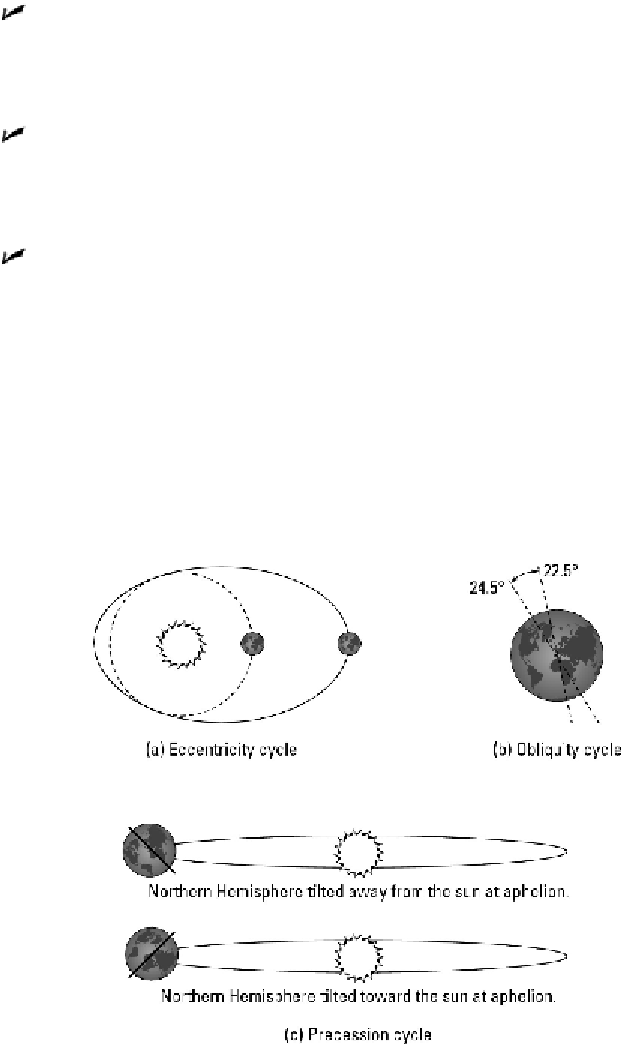Geology Reference
In-Depth Information
Eccentricity:
As the earth orbits the sun, it does not always follow a perfectly circu-
lar route. Sometimes its route is more oval shaped, meaning that at the farthest
reaches of its orbital loop it is farthest from the sun. This change occurs over a
period of 100,000 years.
Obliquity:
As the earth rotates on its axis and moves around the sun, it is also
slightly tilted. The degree of tilt shifts about 2 degrees over a period of 40,000
years. When the earth is tilted the most, the northern hemisphere of the planet is
tilted farthest away from the sun.
Precession:
Along with tilting, the earth also wobbles on its axis. The axis (at the
North Pole) points in different directions in the sky over a period of about 26,000
years.
Each of these three cycles occurs independently and at the same time over a period of
thousands of years. When the extreme of each cycle coincides — eccentricity takes the
earth far from the sun, the tilt is at its greatest, and the precession points the axis away
from the sun — the northern hemisphere experiences very cold conditions, and ice
builds up. Likewise, when the earth is closest to the sun, only slightly tilted, and the axis
is pointed toward the sun, the northern hemisphere is very warm and has no ice
present.
Figure 13-6:
Mil-
ankovitch cycles
of (a) eccentricity,
(b) obliquity, and
(c) precession.



